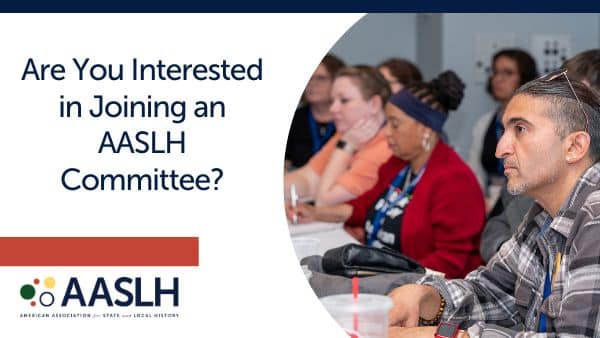
By Laura Casey, Museum Services Coordinator, Texas Historical Commission, Austin, TX
The Problem: The arrival of COVID-19 in January 2020 and the eventual closure of non-essential businesses, including museums and historic sites, was a surprise to everyone. Few organizations had a plan in place in the event of a worldwide pandemic. A few months later, as everyone learns to co-exist with COVID-19, museums and historic sites are working to re-open and welcome back staff, volunteers and visitors to a safe and familiar, yet somewhat altered, environment. How does a museum safely re-open and welcome back staff and visitors during the COVID-19 pandemic? How do museums offer a similar experience as pre-pandemic yet work to make the museum a safe place? The answer to both questions is thoughtful planning and looking to the plans and experiences of the institutions already open.
Top 10 Tips: It’s important to understand that there are many ways to approach re-opening a museum or historic site. There is no one-size-fits-all solution. There are many resources available to help when developing a re-opening plan, including several recorded webinars and multiple re-opening plans that organizations are sharing. Learn from the organizations that opened before you, reach out to neighboring museums and ask about their plans, and contact the Field Services office in your state or other organization that provides assistance to museums. Use the resources available to guide you in re-opening and remember that everyone is figuring this out one step at a time. The ten tips below can serve as a guide for what to consider when re-opening. It’s not an all-inclusive list, but tips to help get started.
1. Follow the latest guidance from state and local officials regarding reduced occupancy rates, face mask requirements, and other safety procedures. If your area is not issuing clear guidelines or your organization is interested in implementing stricter safety precautions, consider following the guidelines available from the Centers for Disease Control and Prevention (CDC).
2. Review re-opening plans from other museums and historic sites that are in your area and serve as a good comparable to your institution.
3. Consider the necessary changes to allow staff, volunteers, and contractors to safely return to work. Some of the issues to consider include: when face masks are required, how to maintain social distancing in the office and moving work stations, establish staggered shifts to reduce the number of people in the office at one time, changes to job duties, telecommuting shifts, establishing policies about employees staying home if feeling ill, and steps to follow if a staff person or volunteer is suspected or confirmed to have the virus.
4. Consider the necessary changes to allow visitors to safely return to the museum. Here are some of the issues to consider: face masks being required or suggested, new occupancy levels, changes to admission procedures, and changes to retail procedures. You will also want to examine admission fees. Will fees be increased to help cover additional operating costs associated with new protocols? Will reservations be required to help control visitation numbers and enforce social distancing? What other social distancing strategies are needed? What other site-specific considerations should you keep in mind?
5. Provide training for staff and volunteers on new safety protocols. Staff may need to be fitted with and trained on the proper use of Personal Protective Equipment (PPE). The museum should consider providing this training. The Occupational Safety and Health Administration website provides more information on PPE. New cleaning and disinfecting procedures and schedules will also be in place. Will the museum train all staff in these new procedures? You will want to make sure cleaning and disinfecting protocols are developed for non-historic assets and historic assets. The procedures for each will be different and staff will need training for each.

6. Consider the changes and adjustments needed in exhibit areas and for tours. This can include moving or removing artifacts from exhibit to allow for proper social distancing. Consider removing or blocking off hands-on elements in exhibits. Timed ticketing and reservations are a good way to help control crowd size throughout the day and takes some of the pressure off docents to enforce social distancing.
7. Prepare a list of the additional supplies and equipment needed to re-open. Supplies include desk shields, hand sanitizing stations, face coverings, goggles/glasses, nitrile gloves, additional hand soap, additional cleaning and disinfecting supplies, CDC hand washing poster, and signs or stickers to denote proper social distancing space. This is not an exhaustive list of supplies, but it is a good start.
8. Establish written guidelines for new site operations and have copies readily available. Museum operations will be much different than pre-pandemic. The new guidelines will establish if visitors need advance reservations, pay in advance, how groups are handled, if face coverings are required or suggested, etc. The plan will also detail how retail and onsite admissions transactions work. The new operations plan will also address closing the site due to COVID-19 concerns in the future and the procedures for that.
9. This is a difficult situation for everyone. While re-opening museums is important, we want to keep in mind that this pandemic is a prolonged, stressful situation. If possible, the museum may want to explore making counseling, guided meditation, yoga, or some type of stress relief activity available to staff and volunteers.
10. Remember that this plan, like all plans, is a living document meant to guide operations. Update this plan as needed during the current pandemic. Once the COVID-19 crisis passes, update the plan yearly so the museum is prepared for when this happens in the future.
What is the Field Services Alliance? The Field Services Alliance (FSA) is an organized group of individuals, offices, and agencies that provide training opportunities, guidance, technical services, and other forms of assistance to local historical societies, archives, libraries, and museums in their respective states or regions.



